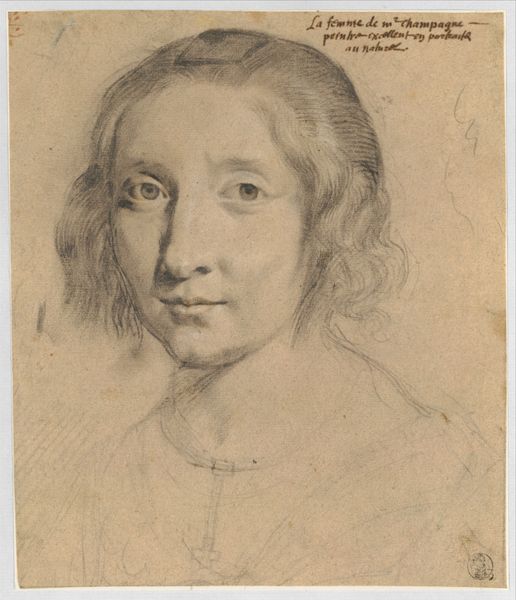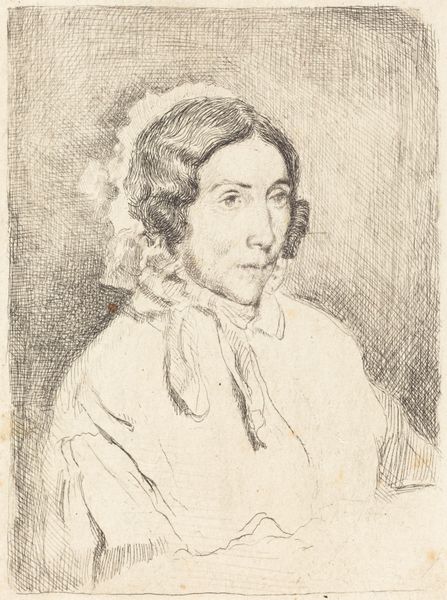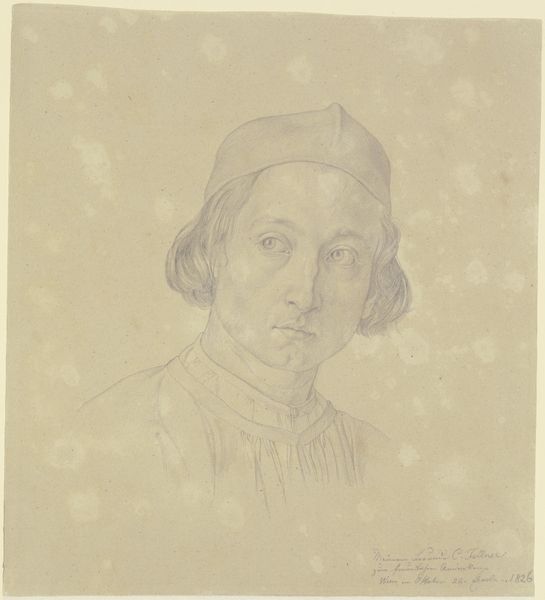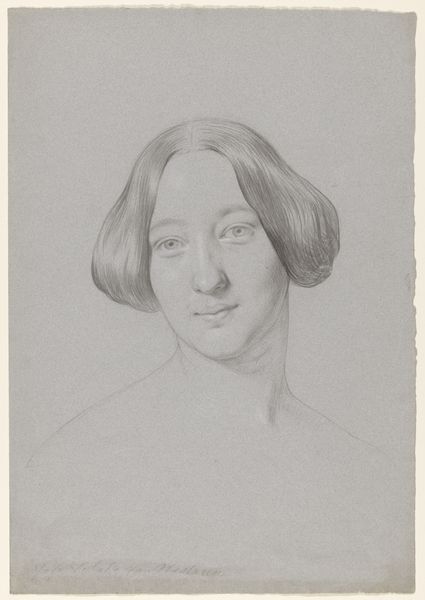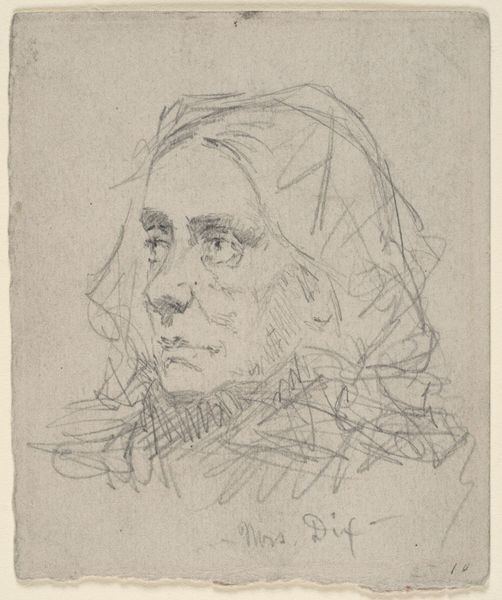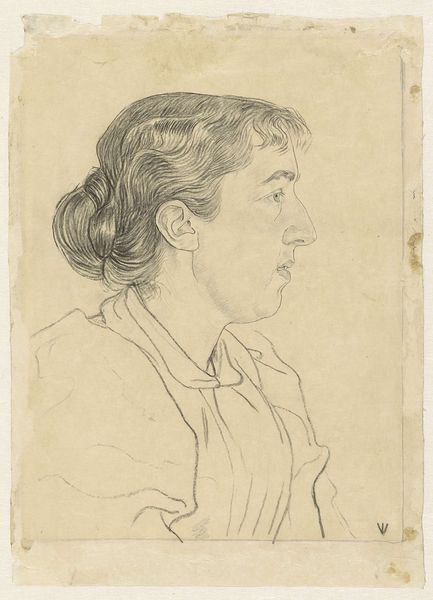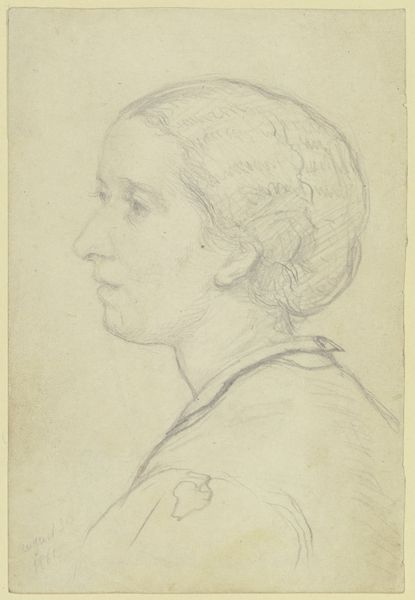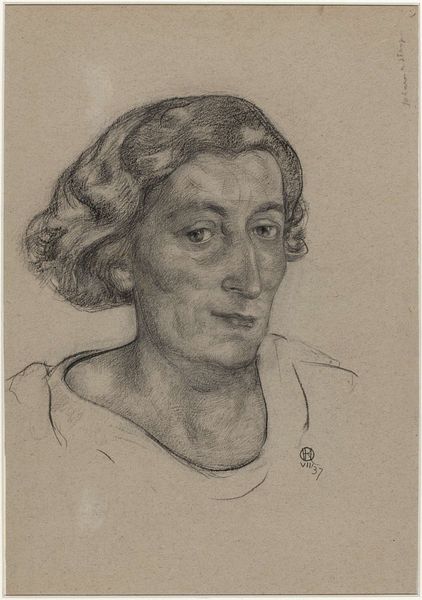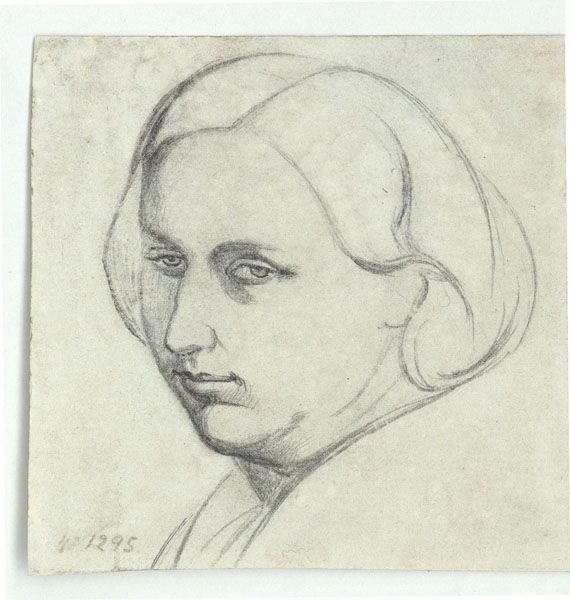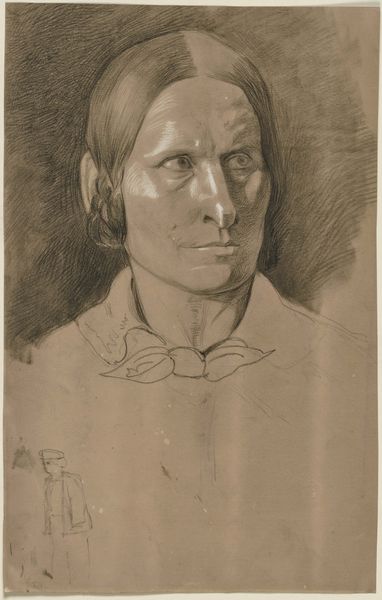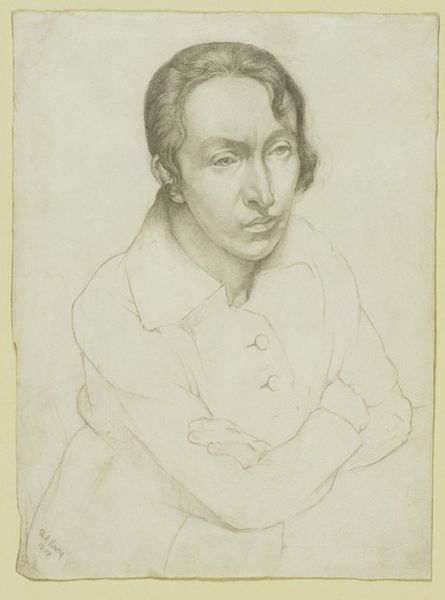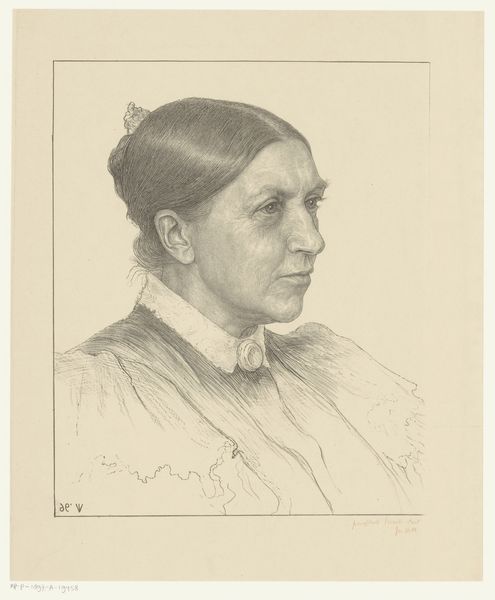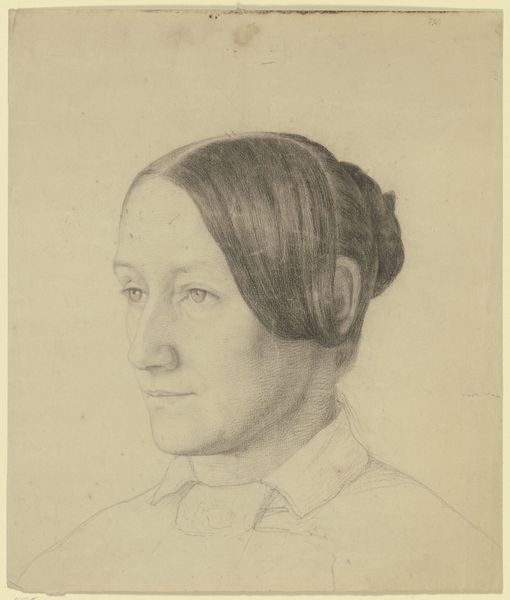
drawing
#
pencil drawn
#
drawing
#
amateur sketch
#
toned paper
#
facial expression drawing
#
light pencil work
#
pencil sketch
#
portrait reference
#
pencil drawing
#
portrait drawing
#
pencil work
Dimensions: sheet: 15.5 x 12 cm (6 1/8 x 4 3/4 in.)
Copyright: National Gallery of Art: CC0 1.0
Curator: This subtle portrait, simply titled "Gustav Heinrich Naeke," is a pencil drawing created around 1820 by Julius Schnorr von Carolsfeld. There's a striking simplicity in the lines. Editor: Yes, it feels incredibly intimate. The sitter has a faraway look, almost melancholy. You can see the delicate, light pencil work gives it an air of gentleness, almost fragile. Curator: The drawing is fascinating for its technical approach. Note the careful attention to form using primarily hatching. The light pencil work suggests preliminary exploration rather than a highly finished rendering. The tonal gradations around the face, particularly, create depth. Editor: I'm drawn to his gaze. The way his eyes seem fixed on some distant point – perhaps yearning or contemplation. Considering the context of the early 19th century, a time of significant intellectual ferment, the expression seems representative of the Romantic era's introspective focus. Do you see any indications in the style or execution that suggests classical references influencing Von Carolsfeld's treatment of this face? Curator: Absolutely, the crispness of the lines, recalling Neoclassical drawings but combined with that new Romantic intensity you are noting. Though it remains, undeniably, a sketch. His features – the high forehead, slightly elongated nose, firm jaw – create a distinct presence on the page. Notice, though, that we gain all of this despite minimal shading of clothing – the visual importance remains focused on the face itself, directing our reading of the portrait toward psychological inquiry, really. Editor: This era was about capturing the spirit and inner essence of a person. In that sense, a direct portrayal feels more honest, more authentically human, capturing perhaps more than he intended of Neake’s spirit. A more “finished” state may distract from this very intentional essence. Curator: In the end, both the restraint and slight imperfections invite speculation. Its incompleteness grants it a strangely compelling power. Editor: An intriguing glimpse into the past, rendered with affecting candor.
Comments
No comments
Be the first to comment and join the conversation on the ultimate creative platform.
